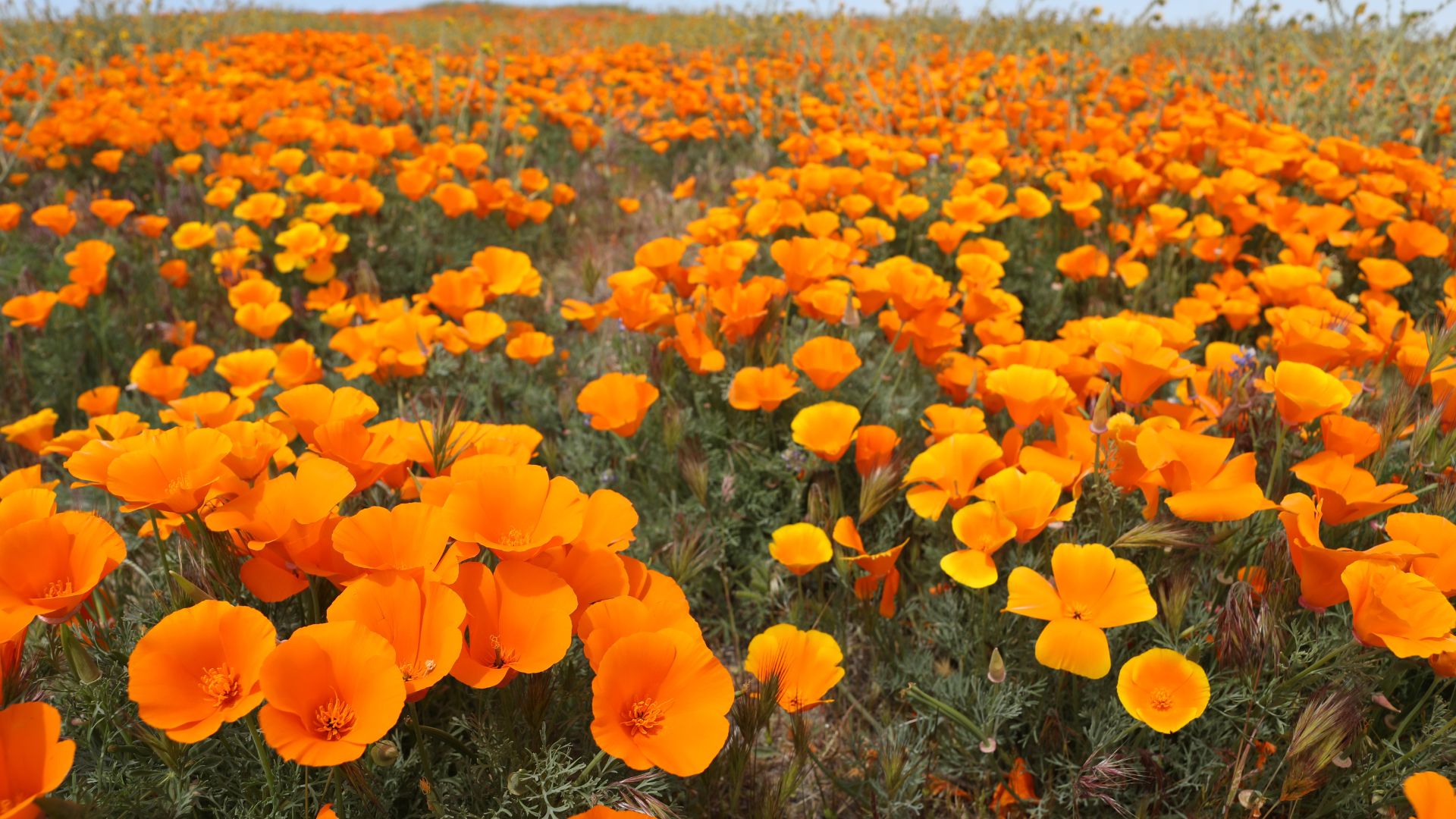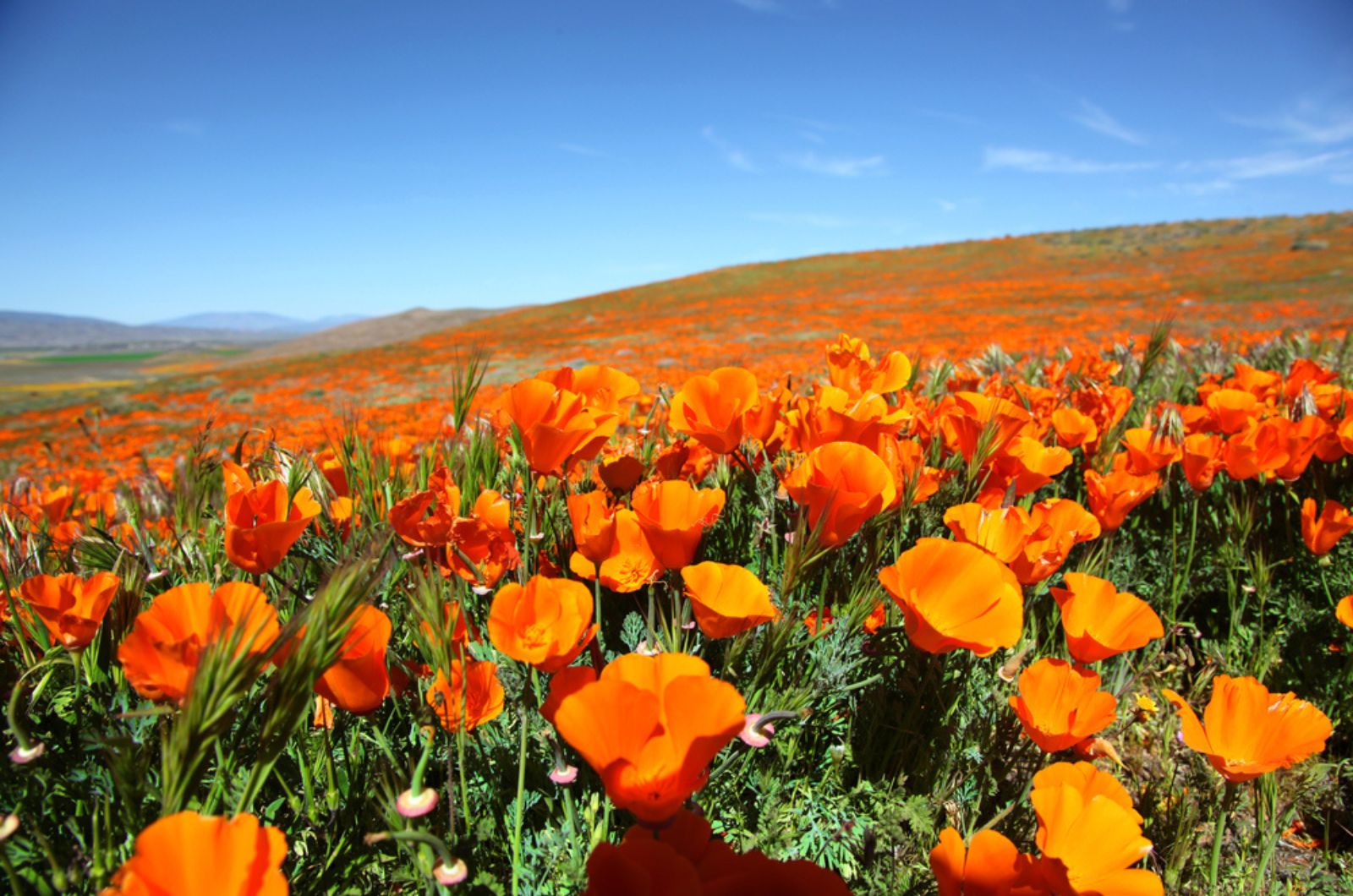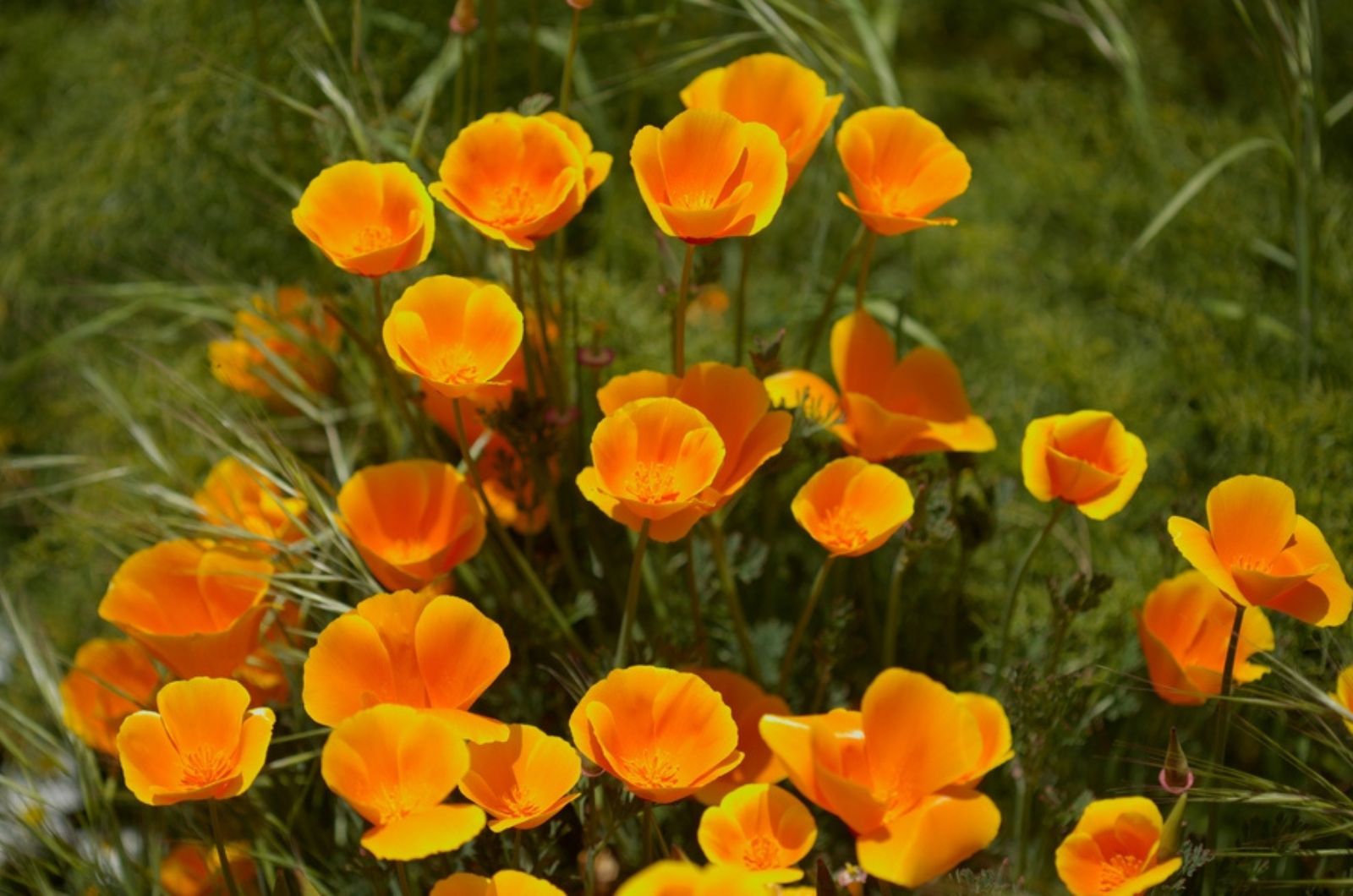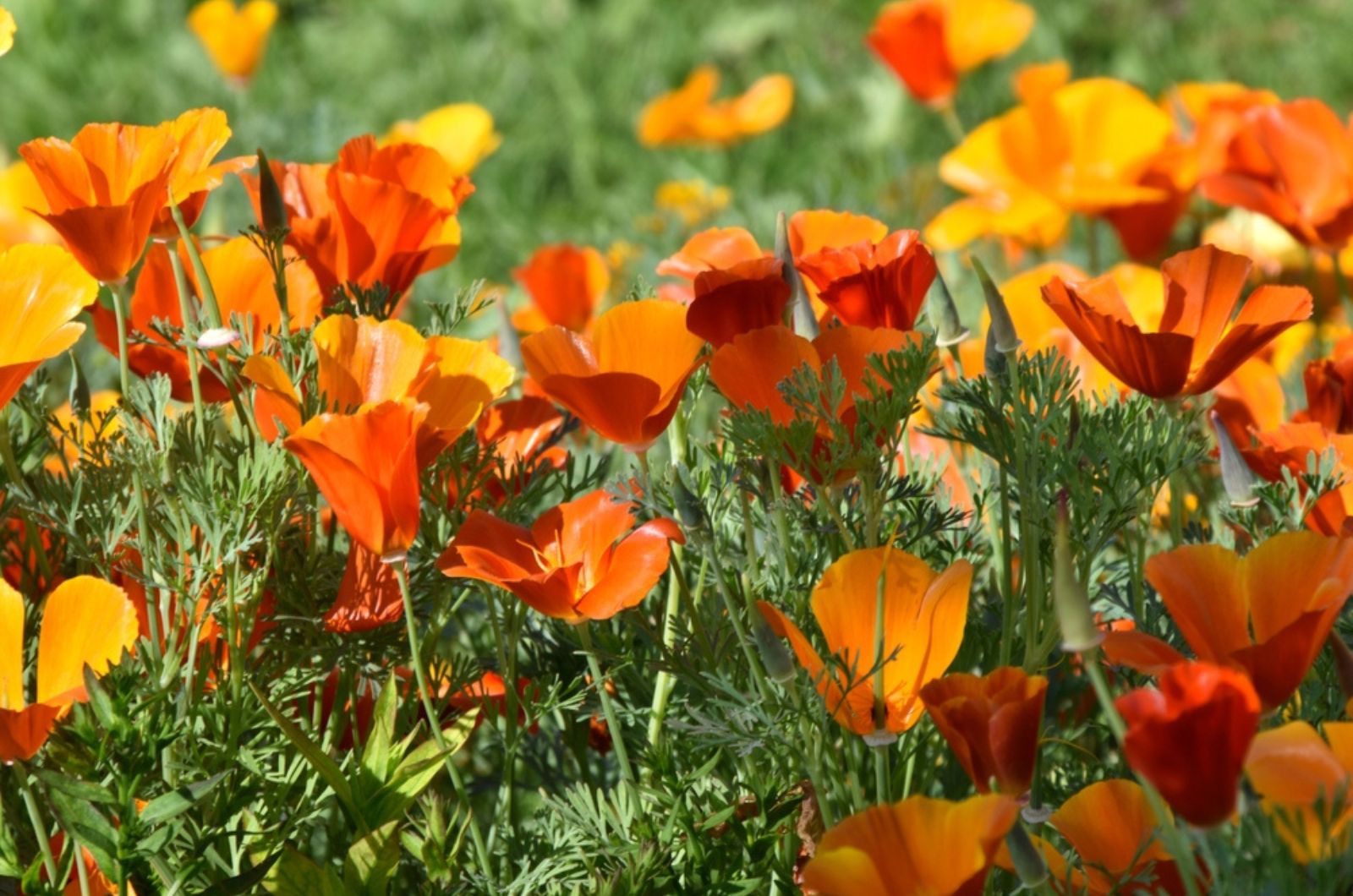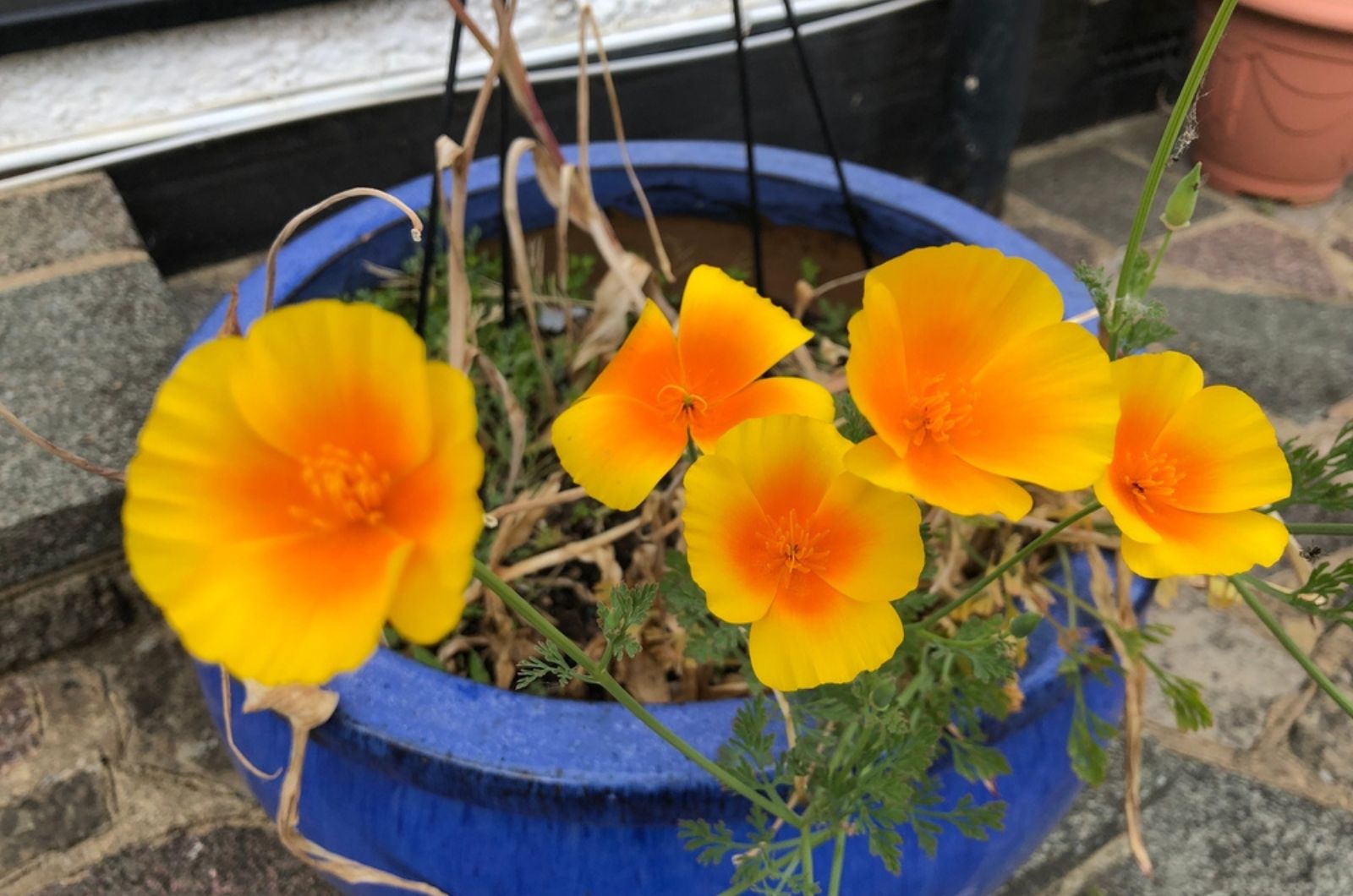In the wonderful state of California, there’s a special flower called the California poppy, otherwise known as Eschscholzia californica. This native wildflower is known for its vibrant orange and yellow flowers that attract plenty of pollinators and beneficial insects.
Besides its ornamental purposes, many gardening beginners absolutely adore it due to their low-maintenance and ability to grow in various conditions!
In this article, we are going to cover how to plant California poppies, how to take care of them, and also some common issues that you might encounter – don’t worry, these are super easy to fix.
Let’s dive in!
Meet California Poppies
We should first meet these beauties before learning how to plant and grow them. California poppies are wildflowers that belong to the Eschscholzia genus. They are known for their remarkable beauty and resilience.
These plants can thrive in hot summers, poor soils, and dry environments. Let’s first discuss their history and origin, then jump into common features and uses.
History & Origin
California poppies are named after entomologist Johanh Friedric von Eschscholtz, who lived in the 18th century.
California poppies were first formally named and documented by Europeans during a Russian trip on the ship “Rurick” in the early 19th century, despite the fact that they are now a common sight in many American gardens [1].
German botanist Adelber von Chamisso traveled to California in 1816 and gave the flower his name in honor of Johann Friedrich von Eschscholtz. This magnificent plant became California’s official state flower in 1909 [2].
These flowers are usually found in the southwestern regions of the US, but they have also spread to the warmer parts of the country. From southern Washington through the west coast and eastward into sections of Texas, you can find these poppies.
But we all know that California is actually the place they like to call home, as the name suggests.
Common Features
One of the most striking features of California poppies is their vibrant petals. These petals can range from shades of orange and yellow to occasionally creamy white or pinkish shades. The bright colors make them stand out in the landscape.
What’s interesting is that these flowers close during the night and open back up again the next morning!
Their leaves are finely divided, creating a feathery and fern-like appearance. This foliage is often bluish-green in color and forms a lovely contrast with the colorful flowers.
California poppies have compact growth and they usually grow around 12 inches tall. This makes them perfect for borders or container gardening.
They are also a type of self-seeding plant so you won’t have to worry about planting them over and over again!
Common Uses
Besides the obvious aesthetic benefits, there are plenty of other times when California poppies come in handy!
California poppies are often used in landscaping for erosion control. Their extensive root systems help stabilize soil on slopes and prevent erosion, making them valuable in restoring disturbed areas.
Not only are these flowers going to spruce up your garden, but they will also attract bees, butterflies, and other beneficial insects to it. So, if you are thinking about growing your own butterfly garden, start by growing poppies!
California poppies were also used in herbal medicine. The flowers were sometimes used for their mild sedative properties, and parts of the plant were utilized to make remedies for various ailments.
After a rainy winter, a so-called “super bloom” occurs every few years that creates a wonderful flower display in state parks that attracts folks to take pictures and simply admire the beauty!
How To Plant California Poppies
Planting California poppies is just as easy as growing them. We are going to discuss where to buy them first, and then talk about some useful planting tips.
Stay tuned!
Where To Buy
California poppy seeds are available in most garden shops and nurseries. You can choose different varieties based on your color preference. You can also find them online at Botanical interests and Amazon.
Planting Tips
Now let’s discuss some planting tips. You should immediately plant them in the ground because they don’t like to be transplanted. Make sure to find a sunny spot with well-draining soil. Sandy soil will keep them happy and healthy.
After you have found the perfect spot, simply scatter some California poppy seeds and press them lightly into the soil. Then, water thoroughly.
The best time to plant these beauties is in the fall because they start their life cycle during this period. You can also plant California poppy seeds in early spring in case you miss fall planting.
Patiently wait a couple of weeks for seed germination. After this, it’s best to water them once the soil is dried out. Avoid watering if it rains. Once grown, these poppies will return year after year.
Luckily, they are not invasive and you can easily control them with light weeding. If you want to find out more info about planting California poppy seeds, check out this video:
California Poppy Plant Care Guide
These beautiful plants are low-maintenance and relatively easy to take care of. So, you get to enjoy that breathtaking flower display with little to no effort!
Also check out these 14 Old-Fashioned Flowers For A Spectacular Garden Display.
Water Requirements
We mentioned that you should water these plants thoroughly right after planting. Keep watering them until they are established. California poppies are relatively drought-tolerant and can adapt to drought conditions.
However, that doesn’t mean you shouldn’t water them at all. It’s best to water them sparingly, only when the soil feels dry to the touch. Avoid too frequent watering because it can lead to root rot and other issues.
In case you are growing these wildflowers in containers, make sure that the drainage is good – the container should have drainage holes and the potting soil should be mixed with sand or perlite.
You will probably need to water container California poppies more because they dry out faster.
Light Requirements
These sun-loving poppies need at least 6 hours of direct sunlight during the day. So, if you plant them in a shady spot, your poppies will probably become leggy and they won’t produce as many flowers as they normally would.
However, if you live in warmer regions with intense sunlight, then some light shade during the hottest hours can protect your plant. Still, they can withstand the heat effectively just as long as they receive regular waterings.
Temperature & Humidity Requirements
California poppies are used to California weather. These beauties thrive in USDA hardiness zones 8 through 10. However, you can grow poppies as annuals basically anywhere.
They thrive in dry to moderate humidity. High humidity and excessive moisture should be avoided because they attract fungal diseases.
Fertilizing Requirements
California poppies do not require heavy fertilization. In fact, too much fertilizer can result in excessive leaf growth at the expense of flower production. If needed, apply a balanced, low-nitrogen fertilizer sparingly.
You can also add some slow-release fertilizer before planting them. Always make sure to follow the instructions displayed on the packaging!
Soil Requirements
Although they can grow pretty much anywhere, California poppies prefer well-draining soils with good aeration. So, avoid planting them in heavy, clay-rich soils – in this case, it’s best to grow them in containers.
These wildflowers generally like more neutral to slightly acidic soils. You can add a bit of compost to improve the soil’s fertility.
Propagation
Propagation is pretty easy since these plants do the work on their own. Poppies will spread their seeds at the end of the flowering season. These will grow into new plants the following season.
If you don’t want them to grow in certain areas, simply collect seeds from the seed pods once they are dry. You can either store these seeds or plant them immediately.
Tips For Growing California Poppies In Containers
Growing them in containers is pretty much the same as growing them in the ground. You have to keep them in full sun otherwise they won’t grow properly.
You can put them on either patios or balconies – they will be fine just as long as they receive enough sunlight. Keep in mind that they are not suitable for growing indoors.
We already mentioned that container poppies need more watering than ones grown in the ground. Simply water them once the soil dries out.
Also make sure that the container is large enough because California poppies like to spread. So, when planting, scatter the seeds so that each seedling has enough space to grow without being overcrowded.
You can deadhead the spent flowers to encourage the plant to produce more flowers, but also to maintain a nice and tidy appearance.
Common Issues With California Poppies
Even though they are hardy plants, you still might have some issues with your California poppies. Some of the problems include:
• pests – look out for aphids and thrips. Get rid of them with insecticidal soap or by introducing predatory insects like ladybugs.
• wilting – usually caused by overwatering or underwatering. Check the soil; if it is dry, increase watering. If it is wet, let the soil dry out before watering them again.
• diseases – powdery mildew appears in wet conditions. Water your plants in the morning and avoid getting the leaves wet. Remove any affected leaves or stems.
• weak stems – common when there is overcrowding. Thin young California poppy seedlings about 12 inches apart.
References
1. K.N. Julie. Plant of the Week: California poppy (Eschscholzia californica). United Stated Department of Agriculture.
2. California Poppy. California Department of Fish and Wildlife.

